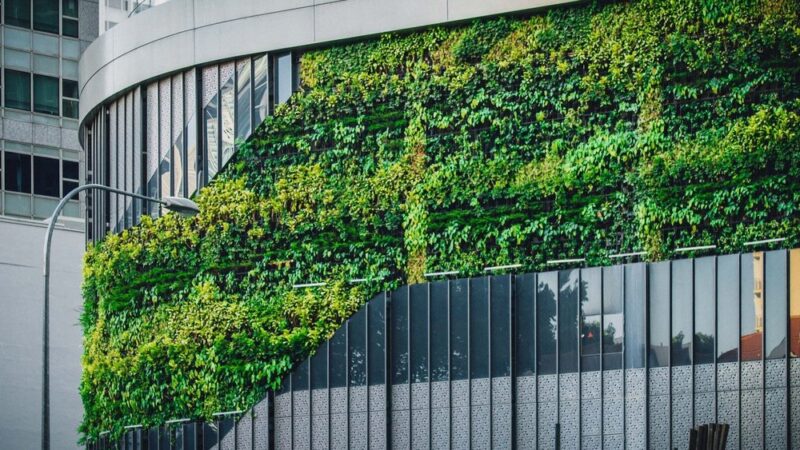Design is perhaps one of the most powerful forces on this planet, molding our world in a multitude of ways. We may not always notice, but the colors, lines, and shapes of a space communicate to our brain the decisions we should make, what to think, and what to feel. And when it comes to the built environment, design even dictates what kind of lifestyle we can have.
This article was written by Seairra Sheppard and originally published by Strong Towns.
I’ve always been interested in design—or rather, keenly aware of it, taking care in how I lay out my personal space to generate a peaceful environment. I grew up hearing that the way you design your home will affect your mood and even your stress levels. For example, I’ve noticed that when my living room gets cluttered, I begin to feel uneasy and I don’t focus well. It’s the same with a bland, empty room. Something about it just doesn’t feel good.
The outside design of our streets and cities has just as much of an effect on us as the interior design of our homes. It’s simply on a much larger scale. The way we design our neighborhoods will directly impact our daily behaviors. If we design places that stimulate delight, we will be more likely to stick around and interact with said place. If we design places that feel human centered, we will feel safe and more relaxed; just as when we create neighborhoods with large, empty, and liminal spaces, we tend to retreat and not want to venture out because it just doesn’t feel right.
Lately, I’ve been interested in the concept of biomimetic design. In the design world, to create spaces that are comfortable and captivating, architects sometimes use biomorphic forms and patterns. Essentially, in this sort of design, artists and architects look to nature for inspiration on how to decorate and shape spaces. Like Google’s office spaces, where they combined elements of biophilic design (i.e., design that recognizes the “human tendency to interact or be closely associated with other forms of life in nature”) to create an area that is best suited for a creative work environment. They focused on flowing layouts and making sure each space had plenty of either natural or adjustable light.
I enjoy biomimetic design—drawing in natural elements elevates your space and boosts your mood. But perhaps more important than captivating aesthetics, what we can glean from biomimetic design is that nature is adaptable. In nature, we see plants growing and changing to develop a strong environment thriving with life; animals adjust and adapt with the environment; everything is subtly changing all the time.
Likewise, if a city is able to incrementally grow and evolve over time, mimicking natural systems, it will have the ability to adapt to the priorities and concerns of different people across generations.
Incremental development, in which land-use patterns change over time, is key in a Strong Town. Strong Towns member Andrew Price explained well in a past article that with incremental intensification, “each lot is allowed to redevelop as its owner sees fit. Some of the single-family homes turn into duplexes. Some time later, the least intensified lots (the single-family homes) might turn into small apartment buildings. The remaining single-family homes and duplexes turn into mid-rise apartment buildings.”
Just like with the natural world, a built environment that grows incrementally and adapts to the changing needs of its residents will flourish over time.
Unfortunately though, most municipalities prevent us from embracing this deepest form of biomimicry. In many cities, zoning laws restrict how people are allowed to shape their places, even if it becomes apparent that the current design choice isn’t suitable for the function of the environment. Zoning ordinances segregate areas for different “uses,” where each space is only permitted one function—in zoning it’s usually residential, office, commercial, or industrial. These laws affect how we design our environment, holding back our neighborhoods and limiting affordable housing.
Zoning laws determine how we can choose to live. “If we are to have a nation of strong towns, one key policy we have advocated here is that every neighborhood in every city should allow the next increment of development as of right,” says Strong Towns Senior Editor Daniel Herriges.
The way we design our places affect us more than we may initially think. And as I take my evening walks through a single-family-home neighborhood, I wonder how our life choices and living conditions would have changed if zoning laws didn’t restrict people from adapting to their needs. If buildings within neighborhoods were allowed to be mixed use, I imagine our world would be incredibly different. I’m sure there would be more corner stores and pop-up shops, we’d probably choose to walk more, and perhaps more families would build on their homes to create multigenerational spaces.
Eliminating zoning laws to allow incremental development would give people the chance to shape and adapt their built environment to their lives—choosing the designs that best suit them. As life is incredibly unique, so, too, should our neighborhoods be.





